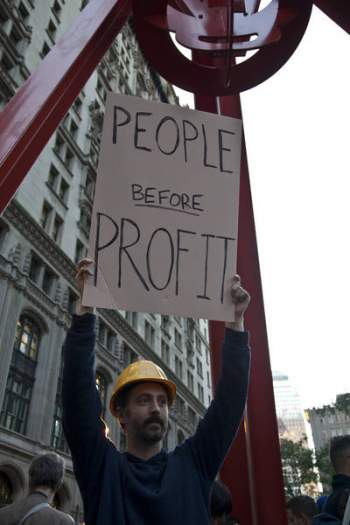
Dodd-Frank Act

What is the Dodd-Frank Act?
The Dodd-Frank Wall Street Reform and Consumer Protection Act was a bill that was drafted by Representatives Barney Frank and Chris Dodd. It was passed by the Democratic controlled Congress and signed into law by President Barack Obama in 2010.
Background
The Dodd-Frank Wall Street Reform and Consumer Protection Act came about in response to the financial collapse of 2007 that led to, what is commonly known as, the Great Recession. The Great Recession was caused in large part because of two factors. The first being the de-regulation of the banking industry and the second being the sub-prime mortgage crisis and the high risk associated with mortgage backed securities.
A report documenting the financial collapse found that the financial meltdown was the result of a number of factors including: high risk, complex financial products; undisclosed conflicts of interest; and the failure of regulators, the credit rating agencies, and the market itself to monitor Wall Street. The failure of credit reporting agencies to monitor the mortgage-backed securities and the 1999 of the Glass-Steagall Act of 1933 effectively removed the separation that previously existed between Wall Street investment banks and depository banks.
THE GLASS STEAGELL ACT OF 1933 & ITS REPEAL
The Glass Steagall Act of 1933 was promulgated as a reaction to the Great Depression. The Act created a separation of bank types and prevented the banking industry from dealing in high risk ventures.
In 1999, in a Republican controlled Congress, the act was repealed. The reasons for its repeal were to stimulate growth in the banking industry. The arguments included the fact that other nations did not regulate their banking industry in this manner and, as such, American banking institutions were losing market shares.
A direct result of the de-regulation of the banking industry was that institutions, such as Citi-Group, were permitted to underwrite and trade mortgage-backed securities.
MORTGAGE BACKED SECURITIES
Mortgage backed securities involved high-risk investment in real property. Mortgages were taken by banks and the banks subsequently pooled the mortgages into the form of securities. The issue with this was that there was no oversight of the matter; due to the repeal of the Glass Steagall Act of 1933. Banks were quick to compete in this newly established market and as such they were involved in riskier mortgages. Consumers, who would not otherwise purchase homes, were able to do so under sub-prime mortgages. The banks did not evaluate whom they should be giving mortgages too. Sub-prime mortgages gave people the impression that they were paying a small interest payment on their mortgage only to realize later that the interest rate would skyrocket after a certain period of time. As a result, many people began defaulting on their homes; often abandoning them in the middle of the night.
Result of the financial collapse
Over 100 mortgage lenders went bankrupt during 2007 and 2008. Concerns that investment bank Bear Sterns would collapse in March 2008 resulted in a sale of the company to J.P. Morgan Chase. Other banks that went bankrupt do to the financial collapse included Lehman Brothers, Merrril Lynch, Washington Mutual, Wachovia and AIG. The Federal government also took control of the, lending institutions, Freddie Mac and Fannie May
As a result the Federal Government issued a bank bailout. In 2008 the United States government approved a $700 billion to buy troubled mortgage-backed securities in the hope of reining in a possible global depression. Included in the bailout, known as TARP, the federal government loaned billions of dollars to banking industries in order to prevent the collapse of the banking industry.
The Dodd-Frank Wall Street Reform and Consumer Protection Act
The Dodd-Frank Wall Street Reform and Consumer Protection Act was passed in response to this crisis. The Act's goal was to accomplish 3 things: regulate the banking industry, heighten consumer protection against banking and credit card institutions, and institute whistle blowing policies.
The oversight of the banking industry was rationalized based on the idea that the banking industry has high incentives to invest in high risk ventures that go against the best interests of the public. Part of the Dodd-Frank Act was to eliminate the ability of the federal government to bailout the banking institutions. The rationale was that if the banking industry knows it will be rescued by the federal government then they are more inclined to invest in high risk ventures.
The Frank-Dodd Act went further to regulate banking industry. The Act created many new agencies and strengthened others. The Frank-Dodd Act included a number of consumer protection rules and created a consumer protection bureau that handled oversight of the banking and credit card industries. Its goal is to hold credit card companies accountable for usurious actions. Part of the reforms made under the name of consumer protection include the disclosure of information to the customer, including the impact of interest rates on the balance of a credit card and the curtailing of predatory overdraft fees in the banking industry.
The Frank-Dodd Act also enhance whistle blowing incentives to wall street employees. Under the Frank-Dodd Act individuals who blew the whistle on illegal and fraudulent behaviors on wall street could be subject to as much as 30% of total penalties against a firm if the allegations lead to a securities fraud conviction.
In all, the Frank-Dodd Financial Recovery and Consumer Protection Act categorized into sixteen titles and by one law firm's count, it requires that regulators create 243 rules, conduct 67 studies, and issue 22 periodic reports.
To read the text of the Dodd-Frank Financial Reform and Consumer Protection Act pleas go to
http://docs.house.gov/rules/finserv/111_hr4173_finsrvcr.pdf



















